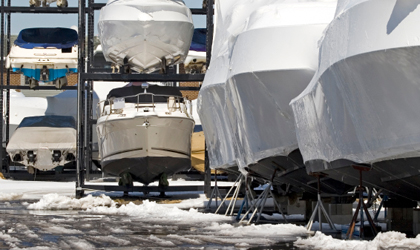Winterizing Your Boat: Step-by-Step Guide

In many areas of the country, you’ll want to winterize a boat before freezing temperatures set in. Deciding on an option for boat storage is only the first step in preparing your pride and joy for its winter slumber. Even if you use your boat all winter long—a practice we most certainly endorse—there are some systems and items aboard that need some extra attention.
How to Winterize a Boat
- Start by prepping your engine; ensure all water has been drained and removed.
- Apply corrosion protection to your engine.
- Consult your owner’s manual for specific instructions, and complete fogging, if needed.
- Add a fuel-stabilizing additive to your fuel system; then run the engine.
- Change your engine’s fuel filters and any fuel/water separators in the system.
- Drain your boat’s freshwater plumbing systems (sinks, tanks, and heads).
- Add antifreeze to your plumbing systems.
- Ensure water is removed from all additional systems (raw water washdowns, livewells, bilge pump, etc.).
- Remove drain plugs.
- Cover your boat or place it into winter storage.
Ironically, it’s water that poses the most danger to your boat during the off-season. Freeze-damage is the biggest potential problem, but water in and on your boat can also promote winter-time mold and mildew growth, and corrosion. So as you consider all of these tasks, remember that your main goal is to keep out water and moisture to the greatest extent possible.
Be sure to concentrate on these systems during the winterization process:
- The engine
- Fuel systems
- Plumbing systems
- All other systems that can hold water
View the full article here.
